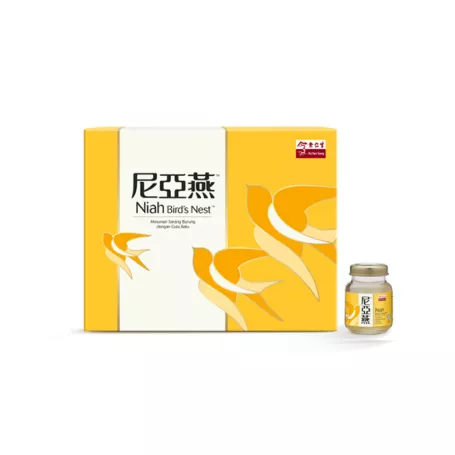The Surprising Difference Between Bird’s Nest and Fish Maw: Which One Truly Nourishes Better?

When it comes to traditional Asian superfoods, bird’s nest and fish maw often top the list. Both have earned legendary status in Chinese medicine for their restorative properties and rich nutritional profiles. But which one actually nourishes better? Is bird’s nest truly the elixir of beauty, or does fish maw offer unmatched power for joint and tissue repair?
In this comprehensive guide, we’ll explore the differences between bird’s nest and fish maw, their health benefits, ideal applications, scientific backing, and common usage mistakes—so you can confidently decide which one fits your wellness goals.
Nutritional Power of Bird’s Nest
Rich in Sialic Acid: Immune-Boosting and Skin-Enhancing Benefits
Bird’s nest contains sialic acid, a bioactive compound known for its immune-regulating, antiviral, and cellular repair properties. It is especially effective at boosting skin hydration and reducing inflammation, making it a go-to for beauty-conscious individuals.
Modern research has shown that sialic acid plays a role in neurodevelopment, which is why it’s also prized in prenatal nutrition. It helps regulate immune responses and supports mucosal protection—two crucial factors in overall health.
Ideal for Pregnancy, Post-Surgery Recovery, and Immunity Support
Thanks to its gentle nature and bioavailable nutrients, bird’s nest is recommended for:
-
Pregnant women (supports fetal brain development)
-
Post-surgical patients (helps regenerate tissue)
-
Immunity-challenged individuals (enhances defense systems)
Bird’s nest is non-greasy, easily digestible, and suitable for long-term consumption.
Moistens Lungs and Soothes Dry Coughs
In Traditional Chinese Medicine (TCM), bird’s nest is used to nourish yin, moisten the lungs, and reduce phlegm. It’s particularly beneficial for people suffering from chronic dry cough, smokers, or those exposed to dry environments.
Nutritional Profile of Fish Maw
High in Collagen: Boosts Tissue Repair and Fights Aging
Fish maw—also known as fish bladder or swim bladder—is one of the richest natural sources of collagen protein. Collagen is essential for maintaining skin elasticity, healing wounds, and supporting joints and bones.
This makes fish maw a top choice for anti-aging diets, especially for people over 30 experiencing a natural decline in collagen production.
Best for Postpartum Healing, Joint Support, and Post-Operative Care
Because of its high protein and amino acid content, fish maw is ideal for:
-
New mothers recovering from childbirth
-
Post-surgical recovery patients
-
Individuals with joint pain or arthritis
It strengthens ligaments and tissues and accelerates healing, which is why it’s often recommended in post-op recovery protocols.
Nourishes Yin and Replenishes Energy in Weak Constitutions
TCM describes fish maw as having a neutral-to-warm nature, making it great for people with chronic fatigue, weak digestion, or low energy. It is particularly useful for those recovering from long-term illnesses or energy depletion.
Scientific Comparisons and Evidence
Peer-Reviewed Studies on Bird’s Nest Efficacy
-
A study from The University of Hong Kong confirmed that sialic acid in bird’s nest enhances T-cell activity, boosting immunity and cellular repair.
-
Researchers in Malaysia found that women consuming bird’s nest consistently showed a 30% improvement in skin hydration and collagen balance.
Research-Backed Advantages of Fish Maw Supplementation
-
The Guangdong Pharmaceutical University published results showing faster surgical recovery in patients consuming collagen-rich fish maw soup.
-
A Taiwanese study revealed that elderly participants who added fish maw to their diet for 21 days reported reduced joint pain and improved bone density markers.
How to Choose Between Bird’s Nest and Fish Maw
For Beauty and Immunity: Go with Bird’s Nest
Bird’s nest is unmatched when it comes to skin improvement, immune support, and prenatal nourishment. It’s a gentle, everyday tonic that fits into morning routines or evening desserts.
For Joints and Recovery: Choose Fish Maw
If your focus is on post-surgical healing, postpartum recovery, or joint repair, fish maw provides denser, restorative protein. Its high collagen makes it especially valuable for aging bodies or athletes.
Can They Be Combined for Better Results?
Yes, bird’s nest and fish maw can be combined. Alternate them during the week or include them in different meals (e.g., bird’s nest in the morning, fish maw soup at night). This holistic approach balances beauty and strength from within.
Common Mistakes and Consumption Warnings
Bird’s Nest: What to Avoid
-
Overcooking: High heat destroys the active sialic acid. Stick to a 30–45 minute double boil.
-
Bleached nests: Extremely white nests may be chemically treated. Choose ivory-colored, traceable products.
-
Empty stomach assumption: While often recommended, some people may experience bloating. Consume 1–2 hours after meals if needed.
Fish Maw: Dosage and Digestion Tips
-
Don’t overconsume: 3–5 grams per serving, 2–3 times a week is sufficient.
-
Soaking time matters: Over-soaking leads to nutrient loss. Soak for 8–12 hours only.
-
Not for everyone: People with weak digestion, internal dampness, or excessive heat should consult a practitioner before use.
Smart Pairings: Bird’s Nest and Fish Maw Recipes
Bird’s Nest Pairings for Glow and Immunity
| Ingredient Combo | Benefits | Best For |
|---|---|---|
| Bird’s Nest + Goji Berries + Rock Sugar | Skin, eyes, immune support | All ages |
| Bird’s Nest + Red Dates + Milk | Blood enrichment, sleep | Women, teens |
| Bird’s Nest + Papaya | Collagen boost, digestion | Beauty-focused diets |
Fish Maw Recipes to Strengthen Joints and Skin
| Ingredient Combo | Benefits | Best For |
|---|---|---|
| Fish Maw + Chicken + Chinese Yam | Joint support, spleen health | Seniors, postpartum |
| Fish Maw + Red Dates + Astragalus | Energy, immunity, skin | Recovery phase |
| Fish Maw + Pork Bones + Peanuts | Collagen, calcium, energy | Athletes, elderly |
Seasonal Advice for Nourishment
-
Spring/Summer: Focus on bird’s nest to replenish fluids and combat heat dryness.
-
Autumn/Winter: Switch to fish maw for warmth, joint support, and yin nourishment.
Seasonal alignment enhances digestion and maximizes the healing potential of these tonics.
FAQs – Frequently Asked Questions
Is bird’s nest safe during pregnancy?
Yes. In moderation, bird’s nest supports fetal development, especially in the second and third trimesters. Always ensure it’s pure and properly prepared.
How should fish maw and bird’s nest be cooked?
-
Bird’s nest: Soak 2–4 hours, then double boil with water and natural sweeteners.
-
Fish maw: Soak 8–12 hours, blanch, then simmer in soup with herbs or meat.
Who should avoid bird’s nest or fish maw?
-
Bird’s nest: Avoid if allergic to proteins, or during fever/infection.
-
Fish maw: Avoid if you have damp-heat constitution or poor digestion.
Can they be eaten together?
Yes, but space them out in the day. They have different absorption rates and digestion requirements.
Which works faster for recovery?
Fish maw tends to show results in 7–10 days for tissue healing. Bird’s nest offers gradual effects over 2–4 weeks, particularly for skin and immunity.
Conclusion
Both bird’s nest and fish maw are excellent, time-tested nutritional tonics. The key is to match the right one with your personal health goals. Choose bird’s nest for radiant skin and immune support, and opt for fish maw for healing, recovery, and joint care. For those with a weak constitution or recovering from illness, using both in rotation offers a well-rounded wellness regimen.
Want to elevate your diet and heal from the inside out? Choose wisely—and nourish naturally.

 Bahasa melayu
Bahasa melayu 中文
中文

























